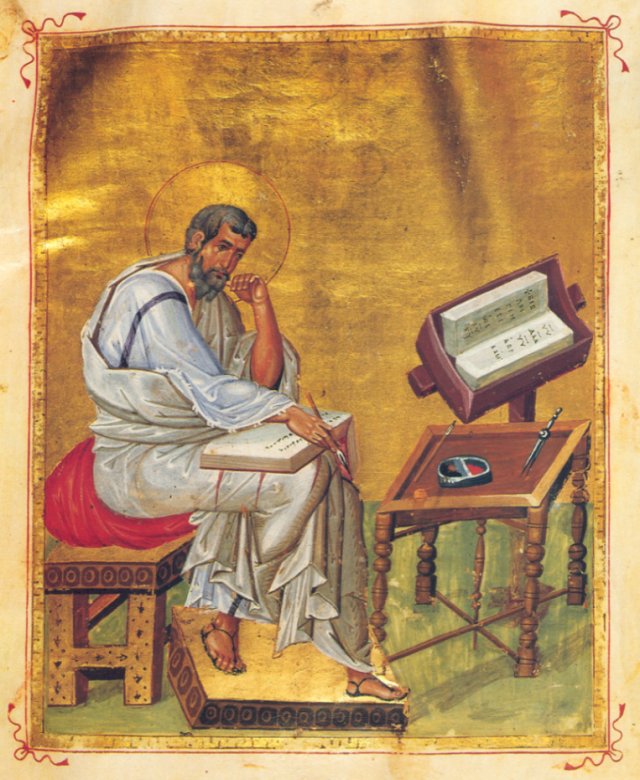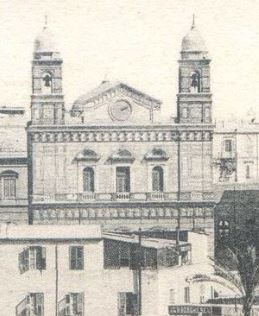

Home News & Events Study Research Members & Staff Publications Friends of the Hellenic Institute Contact Us
HS5127 Greek Hands of the Palaeologan Period
(13th-15th century)
This is an advanced course in Greek Palaeography addressed to students with reading knowledge of Greek, who attend mainly the intercollegiate University of London MA programme in Late Antique and Byzantine Studies, and MA Classics, and RHUL MA History: Hellenic Studies, or pursue MPhil/PhD studies in the field of Classical and Byzantine studies. This course is a progression of the HS5123 Elementary Greek Palaeography and HS5124 Greek Palaeography. It is offered on alternative years with HS5128 Byzantine Autographs of the Palaeologan Period (13th-15th century).
The course examines various hands of Greek scribes and scholars active in the last period of Byzantium, in the wider context of Byzantine history, education and culture. It focuses on the following areas:
- The political and cultural changes in the Byzantine Empire following the capture of Constantinople by the Crusaders in 1204, the recapture of the City by Michael VIII Palaeologus in 1261 until its fall to the Ottoman Turks in 1453, as these are reflected in the various Greek literary, documentary and scholarly hands.
- The theological dialogue between the Greek Orthodox and Roman Catholic theologians that culminated in the Council of Ferrara-Florence (1439) as attested in Greek manuscripts.
- The activity of Greek scholars and scribes in Byzantium and Western Europe, and their role in the translation of Latin texts and the transmission of classical Greek texts during the Renaissance.
- The passage from the Greek manuscript to the Greek printed book, especially in Italy.
The course aims to bring students up to a level where they would be able to (a) read and transcribe autograph texts from published facsimiles and original manuscripts, (b) place these texts in the milieu in which their authors operated, and (c) assess the contribution of these scholars in particular, and Byzantine scholarship in general, to the revival of classical letters in Western Europe during the Renaissance.
The introductory meeting presents the political and cultural changes as reflected in the various hands and styles of the Palaeologan period. Each of the rest two-our sessions is devoted to reading and transcribing from facsimiles representative samples of literary, documentary and scholarly hands and styles including 'selected' majuscule and mixed minuscule, Palaeologan ‘pearl script’, 'liturgical’, ‘literary’ and ‘enlarged’ minuscule, ‘blob’ style (‘Fettaugenstil’), ‘Metochites’ and ‘Hodegon’ style, imperial chancery hands, S. Italian and Cypriot Greek hands, documentary hands in Athonite documents, scholarly hands with annotation, autographs. The final sessions discuss the development of the Greek script from manuscript to the printed book; the activity of Cardinal Bessarion in Italy, Aldo Manuzio and Zacharias Kallierges’ first editions, the fonts ‘grecs du roi’ by Claude Garamond, and the ‘print’ minuscule (‘Druckminuskel’).The course culminates with a visit to Lambeth Palace Library and/or the British Library to examine Greek manuscripts and incunabula.
This one-unit course involves 40 hours of teaching and course work (over two terms), mainly transcribing texts from facsimiles of manuscripts and commenting on their layout and the script, either in class or individually.
Assessment is by three written assignments of 3,500 words each.
Tutor:
Dr Charalambos DendrinosKey bibliography:
- M.L. Agati, Il libro manoscritto da Oriente a Occidente. Per una Codicologia comparata (Rome, 2009), trans. C.W. Swift, The Manuscript Book. A Compendium of Codicology, Studia Archaeologica 214 (Rome, 2016)
- R. Barbour, Greek Literary Hands, A.D. 400-1600 (Oxford, 1981)
- C. Constantinides, Higher Education in Byzantium in the Thirteenth and Early Fourteenth Centuries (Nicosia, 1982)
- P. Easterling and C. Handley eds., Greek Scripts: An Illustrated Introduction (Society for the Promotion of Hellenic Studies: London 2001)
- P. Eleuteri and P. Canart, Scrittura greca nell’Umanesimo italiano (Milan, 1991)
- E.B. Fryde, The Early Palaeologan Renaissance (1261-c. 1360) (Leiden-Boston, 2000)
- E. Gamillscheg, D. Harlfinger et al., Repertorium der griechischen Kopisten, 800-1600, 3 vols. (Vienna, 1981, 1989, 1997)
- D.J. Geanakoplos, Greek Scholars in Venice (Cambridge, Mass., 1962)
- J. Harris, Greek Emigres in the West (Camberley, 1995)
- D. Harlfinger, Specimina griechischer Kopisten der Renaissance, vol. 1: Griechen des 15. Jahrhunderts (Berlin, 1974)
- H. Hunger, Schreiben und Lesen in Byzanz (Munich, 1989), Greek trans. by G. Vasilaros, ed. T. Kolias, O Kόσμος του Βυζαντινού Βιβλίου (Athens, 1995)
- O.P. Kristeller, Renaissance Thought and Its Sources (New York, 1979)
- L. Labowsky, Bessarion’s Library and the Biblioteca Marciana. Six Early Inventories (Rome, 1979)
- E. Litsas, Σύντομη Εισαγωγή στην Ελληνική Παλαιογραφία και Κωδικολογία, part II (Thessalonica, 2001)
- S. Mergiali, L’enseignement et les lettrés pendant l’époque des Paléologues (1261-1453) (Athens, 1996)
- E. Mioni, ‘Bessarione scriba e alcuni suoi collaboratori’, in Miscellanea Marciana di Studi Bessarionei, eds. R. Avesani & G. Billanovich, G. Pozzi (= Medioevo e Umanesimo 24) (Padua, 1976), pp. 263-318
- J. Monfasani, Byzantine Scholars in Renaissance Italy: Cardinal Bessarion and other Emigrés (Variorum: London, 1995)
- La Paléographie grecque et byzantine, Paris 21-25 Octobre 1974, Colloques Internationaux du CNRS, 559 (Paris, 1977)
- L. Perria, Graphís: per una storia della scrittura greca libraria, secoli IV a.C.-XVI d.C (Rome-Vatican City, 2011)
- R. Proctor, The Printing of Greek in the Fifteenth Century (Oxford, 1900; repr. Hildesheim, 1966)
- A. Taurant-Boulicaut, Lettres grecques: Catalogue de la littérature grecque profane et chrétienne. Éditions XVe-XVIIIe, Bibliothèque André-Desguine, Archive départementales des Haut-de-Seine (Nanterre, 1999)
- E.M. Thompson, An Introduction to Greek and Latin Palaeography (Oxford, 1906; repr. 1975)
- R.E. Sinkewicz & W.M. Hayes, Manuscript Listings for the Authored Works of the Palaeologan Period (Toronto, 1989)
- K.S. Staikos, "Charta" of Greek Typography. The Publishing Activity of the Greeks and their contribution to the intellectual Renaissance of the West, vol. I, 15th century (Athens, 1989)
- E. Trapp et al., Prosopographisches Lexikon der Palaiologenzeit,fasc. 1-12 (Vienna, 1976-1990)
- A. Turyn, Dated Greek Manuscripts of the Thirteenth and Fourteenth Centuries in the Libraries of Italy (Urbana, 1972)
- A. Turyn, Dated Greek Manuscripts of the Thirteenth and Fourteenth Centuries in the Libraries of Great Britain (Washington, DC, 1980)
- M. Vogel & V. Gardthausen, Die griechischen Schreiber des Mittelalters und der Renaissance (Leipzig, 1909; repr. Hidelscheim, 1966)
- N.G. Wilson, From Byzantium to Italy. Greek Studies in the Italian Renaissance (London, 1992)

